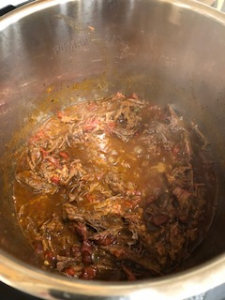MUNDANE MYSTERIES: What Are Those Big Red Balls At Target For?
Target’s got some of the strongest brand recognition going in the retail world. Their name is reinforced by their red & white logo (literally a target), which also happens to be painted around the eye of their mascot, a Bull Terrier named (appropriately enough) “Bullseye”. So, it would seem like those giant red concrete spheres out in front of Target’s brick-&-mortar stores are just another form of Target making itself easily recognizable (since they look like the dot at the center of their logo). But, they’re actually there for your safety (as well as for branding).
Those red balls are called “bollards”. The word bollards mainly refers to the metal or wooden posts along the edge of a wharf on a harbor for sailors to have something around which they could tie their mooring lines. These days, though, bollards can also describe similar posts in front of buildings, which help with keeping distracted drivers from rolling right into the doors. Most places install more traditionally shaped bollards, but Target isn’t most business. They went with giant red balls. They’re not the only business, however, that got creative with their bollards; some baseball stadiums also feature spherical bollards, painted to look like baseballs.
While Target’s bollards are meant to keep shoppers safe from parking lot car accidents, thosee bright red spheres can actually be dangerous on their own, albeit in a different way. Back in May of 2016, a mom in New Jersey sued Target for $1.6 million after her 5-year-old son fell off of one of the bollards there, which shattered his elbow & required surgery in the hopes of stemming long-term damage to his range of motion. The following year, another woman filed a lawsuit after one of the 2-ton bollards broke loose and hit her car.
For the most part, though, when used correctly they’re both safe & safety-encouraging. But, things can go wrong sometimes. The road to you-know-where is paved with good intentions…and rogue bollards, apparently.
Got a Mundane Mystery you’d like solved? Send me a message via social media (@AndyWebbRadioVoice), or shoot me an email at [email protected].
MUNDANE MYSTERIES: Why Does Delicious Food Make Your Mouth Water?
Imagine: you’ve just removed a luscious bundt cake out of the oven & placed it on a cooling rack. Slowly but surely, your kitchen fills with the distinctive, diet-smashing aroma of baked vanilla, and your mouth fills with watery saliva. Why does that happen? Why do our mouths water at the sight/thought of, well, “mouth-watering” food?
Our saliva has a variety of purposes, but the relevant one here is that it helps us eat. Saliva lubricates the food we’re eating, which helps us work it around our mouths as we chew & taste it. That saliva also contains enzymes which start the digestion process prior to swallowing.
The phrase “mouth-watering” is actually pretty accurate. There are 2 types of saliva: mucous & serous. Mucous saliva is exactly what it sounds like: thick, tacky, and full of mucus. Serous saliva, on the other hand, is nearly all water, and that’s what flooding your mouth at the smell, sight, or even thought, of exceptionally delicious foods.
Saliva production is your body’s way of enthusiastically hollering about the food in front of you. It’s your brain shouting, “Yay! We’re about to get our grub on!”, and your salivary glands excitedly agreeing, “Yes! Gimme that cake!”, before eagerly pumping saliva into your mouth to prepare for the imminent feast.
Of course, what happens next & how you deal with that is entirely up to you.
Got a Mundane Mystery you’d like solved? Send me a message via social media (@AndyWebbRadioVoice), or shoot me an email at [email protected].
MUNDANE MYSTERIES: Shirt Loops
What’s the deal with that odd loop on the back of a button-down shirt?
The loop, seen on many dress shirts for both men & women, is a small piece of fabric typically between the shoulder blades, where the upper back of the shirt meets the pleat. While it’s great for annoying someone when you tug on it, it initially had a much more practical function. The loops first became popular among sailors in the Navy, who usually didn’t have much closet space available for their uniforms. So, to make putting away & drying their shirts easier, the loops were included so they could be hung from a hook.
The loops wouldn’t remain exclusive to the Navy for long. In the 1960s, the clothing manufacturer GANT added the “locker loop” to their dress shirts so that customers, who were often Ivy League college students, could hang the shirts in their lockers without getting them wrinkled. The locker loop, however, was originally found on the back of the collar. Later, students repurposed the loops to show their relationship status: if a guy’s loop was missing, that meant he was dating someone (while ladies implemented their own garment-related signal, too, by wearing their boyfriend’s scarf to show they were taken).
Especially enthusiastic romantic partners would often rip the loop off spontaneously, which became something of a trend in the ‘60s. At the time, women who had crushes wearing Moss brand shirts complained that their loops were so strong & secure that they couldn’t tear it off.
For folks who wanted to have a loop without ruining a shirt, there was even one particular mail-order company that would send just the loops to folks in the mail.
You’ll still find those loops on dress shirts nowadays, however they don’t seem to have any social significance. So, if you happen to see one that’s torn, it’s probably just due to wear, not someone’s relationship status.
Got a Mundane Mystery you’d like solved? Send me a message via social media (@AndyWebbRadioVoice), or shoot me an email at [email protected].
Luke Combs Opens Up About His Battle with Anxiety
Anxiety is one of the most common mental health issues. Fact is you never know what someone is dealing with regardless of how they may seem on the surface. Luke Combs always seems super chill, calm and laidback. Here he opens up about dealing with anxiety since middle school. But now, he’s never felt more free.
WEIS and WFRE support St. Jude in January 2021
MUNDANE MYSTERIES: Cement Vs. Concrete
We walk on sidewalks all the time, so much so that we usually don’t ever think about the stuff we’re stepping on: the rigid, smooth, gray hard stuff under our feet. But, have you ever stopped to wonder what the proper name for that stuff is? Is it concrete, or is it cement? And, what’s the difference between the two?
Well, while they’re often interchangeable, concrete & cement actually describe different yet related elements of the blocks, flooring, and walls that comprise so many common structures. Basically, concrete is the gray, gritty building material used in construction, while cement is an ingredient used in concrete.
Cement’s a mixture of dry powder that looks very different from the wet sludge poured out of cement trucks. Cement is made from minerals that have been crushed up & blended together. Just what minerals cement’s made from can vary: clay and limestone are regularly used nowadays, but anything from seashells to volcanic ash also works. Once the ingredients are mixed together the first time, though, they’re fired in a kiln at 2642°F, forming strong new compounds, before being cooled, crushed, and combined again.
That mixture alone is useless, though. Before it can be used in various construction projects, the cement has to be mixed with water & what’s called an “aggregate”, like sand, so that it forms a moldable paste. THAT substance is known as concrete. It fills whatever mold it’s poured into & hardens fast into a solid, stone-like form. And that’s, in part, why it’s the most widely-used building material on the planet.
So, whether you’re drawing your initials into a wet slab of sidewalk, power-hosing your patio, or maybe admiring Brutalist architecture, that’s concrete you’re involved with. But, if you’re ever handling some chalky gray powder that hasn’t been mixed with water, that’s what you call cement.
Got a Mundane Mystery you’d like solved? Send me a message via social media (@AndyWebbRadioVoice), or shoot me an email at [email protected].
{Katie’s Baby Blog} 26 Week Update!
 Only 3 months left to go until we meet baby girl #2!!!!
Only 3 months left to go until we meet baby girl #2!!!!
Right now, we are working on a name for baby girl; going back and forth between a few. I’m also just starting to think about things that I will need for her this time around….and really, it’s not much. Luckily, I still have everything from when Lily was a newborn!
I think the only new thing we will need to buy is a bassinet and DIAPERS and WIPES (you can never have enough of those).
As far as how I’m feeling goes….right now pretty good. Definitely starting to feel “bigger”, more tired this time around, and really not much of a huge appetite. I crave sweets more than anything, but I never really know what I want to eat for any other meal.
Picking up Lily is becoming more of a struggle, so I just try to avoid it when I can, and chasing her around…I’m pretty much giving up on that. That is daddy’s full time job now.
Sleeping is getting harder, I HATE sleeping on my side, but you have to…so I’m flipping back and forth from side to side all night, just trying to get comfortable which isn’t fun.
Right now, baby girl is the size of an acorn squash…and that’s exactly what I feel like i’m carrying around. A little acorn squash that loves to kick me and wiggle around.
<3 Katie Ryan
{Katie’s Kitchen} Instant Pot Shredded Beef Tacos
 I am loving my new pressure cooker! I actually have the Magic Chef version and it is amazing!
I am loving my new pressure cooker! I actually have the Magic Chef version and it is amazing!
Last night I made shredded beef tacos in it and it was so quick and easy…I guess that’s the point of the pressure cooker!
I used a 2 lb. boneless chuck roast (if yours is bigger you can slice it in half to make it fit), season it with taco or fajita seasoning on both sides. Turn the pot to sauté mode- add olive oil and brown the chuck roast for about two minutes on each side, then remove and set aside.
Pour 1/2 cup of chicken or beef broth into the pot and scrape the bottom to remove any stuck bits. Then, put the roast back into the pot. Add crushed or diced tomatoes (14oz can), two bay leaves, and the rest of your seasoning mix.
Cook on high pressure, meat mode for 45 minutes (depending on the side of your roast), then allow the pressure to release naturally for 15 mins., then release the rest manually.
Remove the chuck roast and shred with two forks. With a spoon, skim the fat off of the top of your juices and put your pot back on sauté mode and let the juice simmer for 10 minutes to reduce. Put your shredded beef back into the pot and let it soak for few minutes before serving over rice or in tacos with cheese!
Ingredients
- 3 tablespoons seasoning mix (I used a fajita seasoning packet)
- 1 (3-pound) boneless chuck roast
- 1/2 cup beef broth or chicken broth
- 14 ounce can crushed tomatoes
- 2 bay leaves










